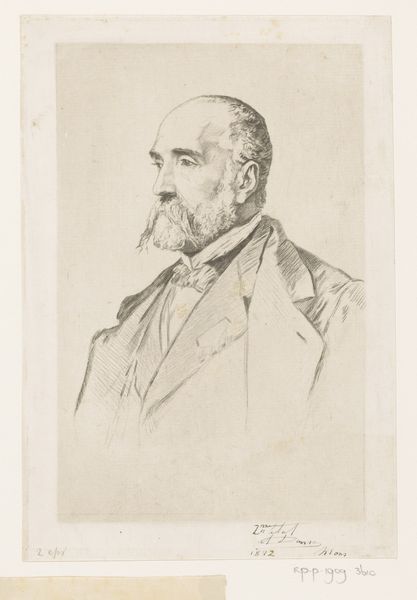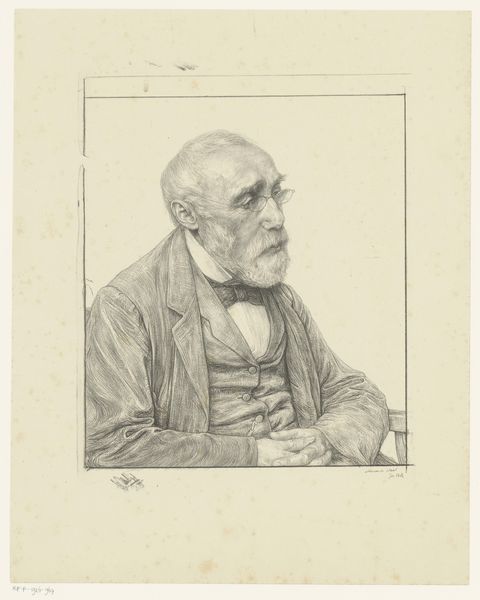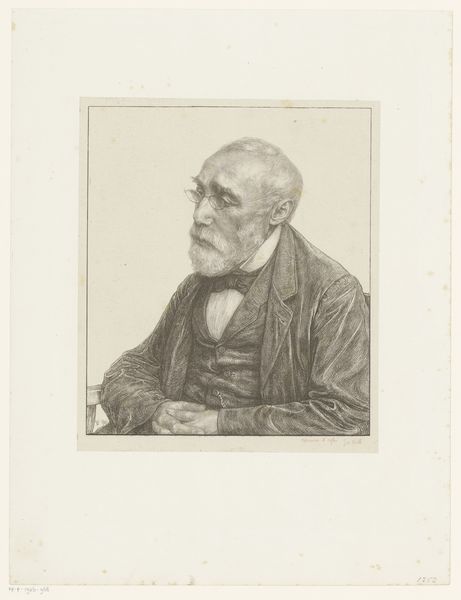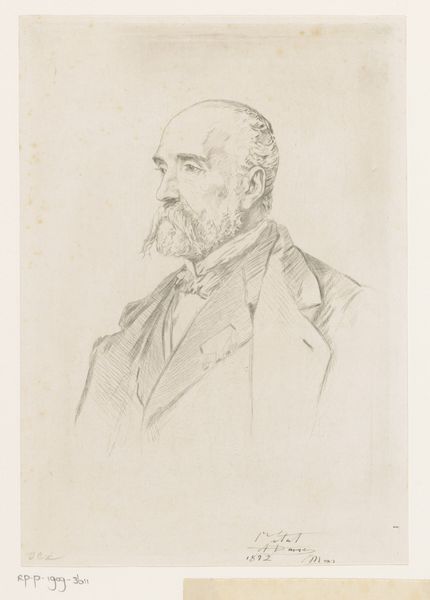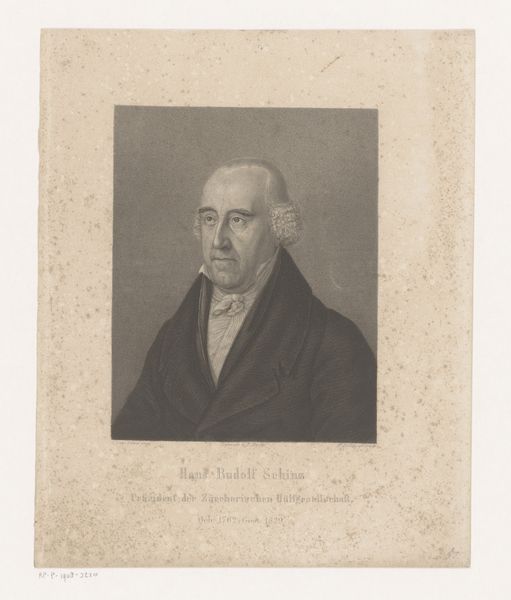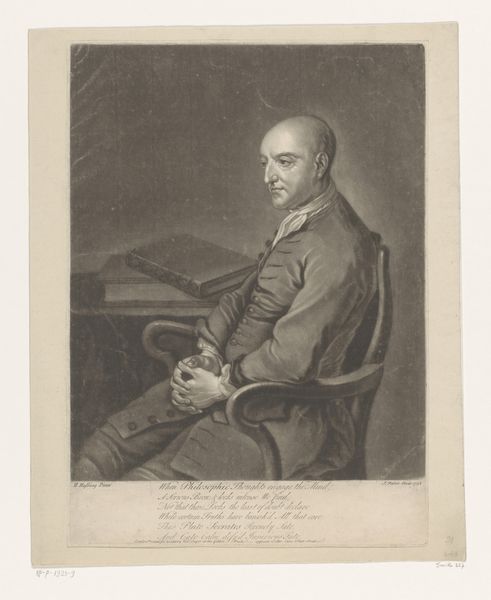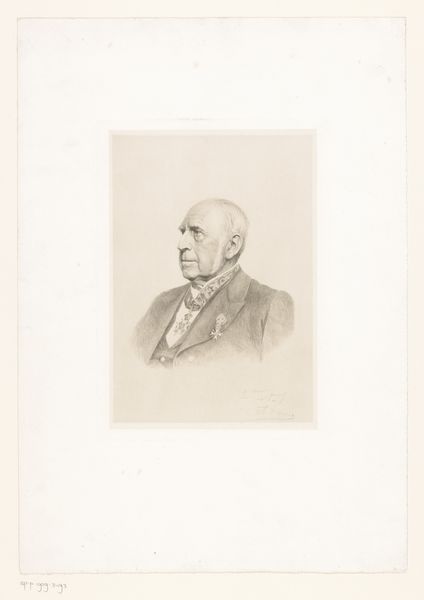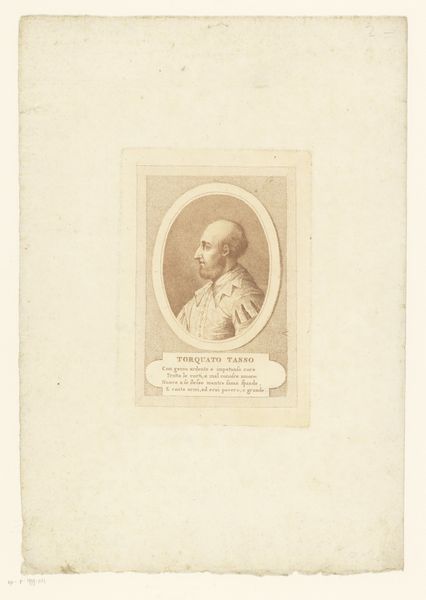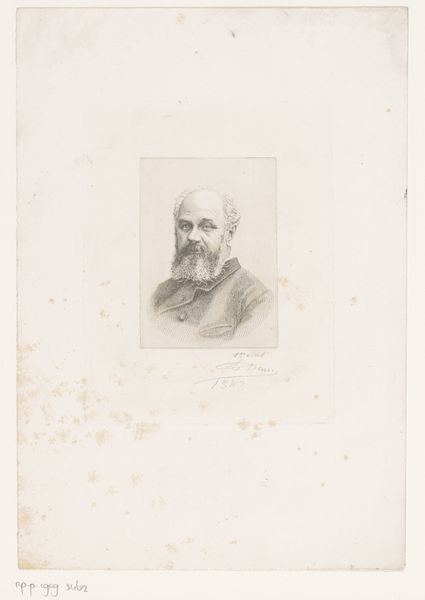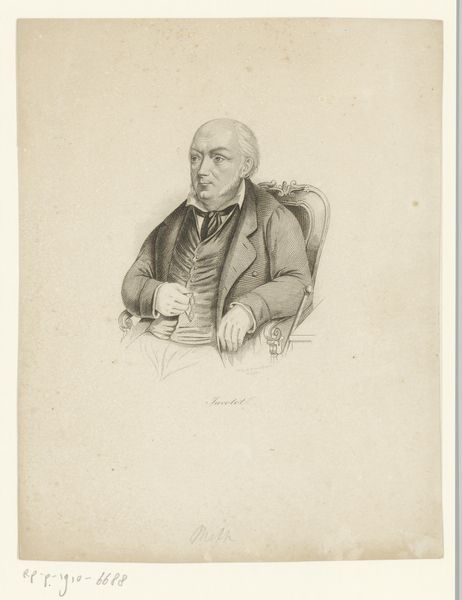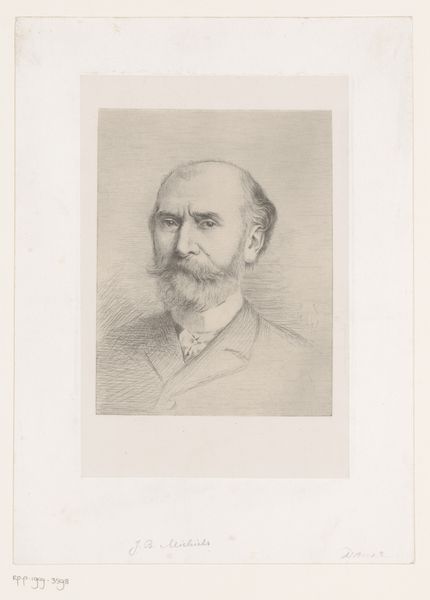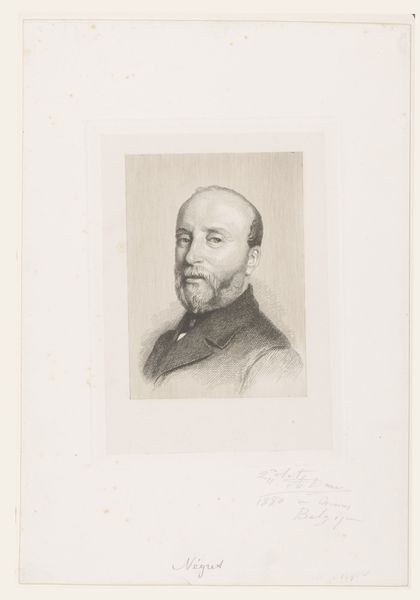
drawing, engraving
#
portrait
#
drawing
#
pencil drawing
#
portrait drawing
#
academic-art
#
engraving
#
realism
Dimensions: height 241 mm, width 165 mm
Copyright: Rijks Museum: Open Domain
Curator: Auguste Danse created this piece, titled *Portret van een onbekende man genaamd Ohnet,* in 1872. It’s a drawing, primarily in pencil, held here at the Rijksmuseum. Editor: A somber work. Immediately, the high contrast and detail capture the eye. You can feel the weight of his gaze, a man marked by time, etched with purpose and perhaps a touch of weariness. Curator: Yes, Danse really showcases his skill through the precise linework, look at the cross-hatching technique used to give form to the sitter's coat and the subtle gradations of tone to reveal the play of light across his face. It’s a classical portrait, echoing academic traditions of rendering the human form. Editor: True, yet who was this 'Ohnet', and why has his identity remained obscured? The title speaks of anonymity, suggesting that in capturing a likeness, a specific narrative is almost secondary. Could this be a statement on the universal experience of aging or perhaps on the effacement of individual identity by societal roles? Curator: It could speak to art's engagement with society; in many cases portraiture immortalizes the elite or nobility, reinforcing their presence in history. Here, though, the 'unknown man' subverts such convention. The exquisite craft elevates the everyday. Editor: The context enriches our viewing so thoroughly. Do you believe the artist aimed to democratize the art, to grant everyone a portrait, not only kings and politicians? How would such work have been perceived in 1872’s social milieu? Curator: Indeed. Moreover, notice how the absence of vibrant color focuses attention entirely on line and form, emphasizing the portrait's underlying structure and artistic skill. It highlights not just what is seen but *how* it is seen, doesn’t it? Editor: Precisely. Thinking about it now, the formal mastery paired with the sitter's unknown status invites continuous reconsideration of art’s power dynamics, even now. Curator: Looking closely, it becomes quite striking, not just an engraving, but an intersection of talent and anonymity in a particular historical moment. Thank you for illuminating the social relevance. Editor: And you, the aesthetic profundity of simple strokes!
Comments
No comments
Be the first to comment and join the conversation on the ultimate creative platform.
